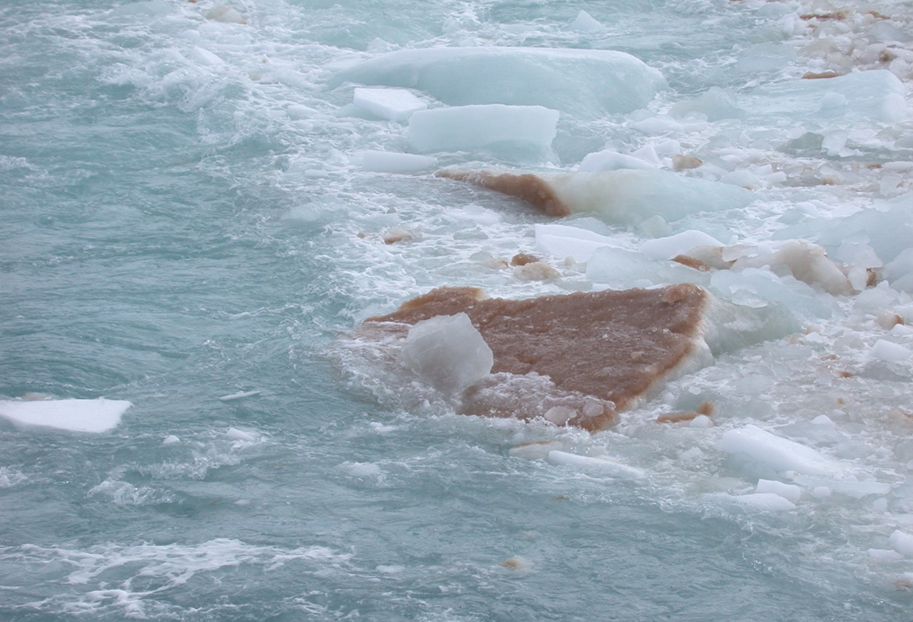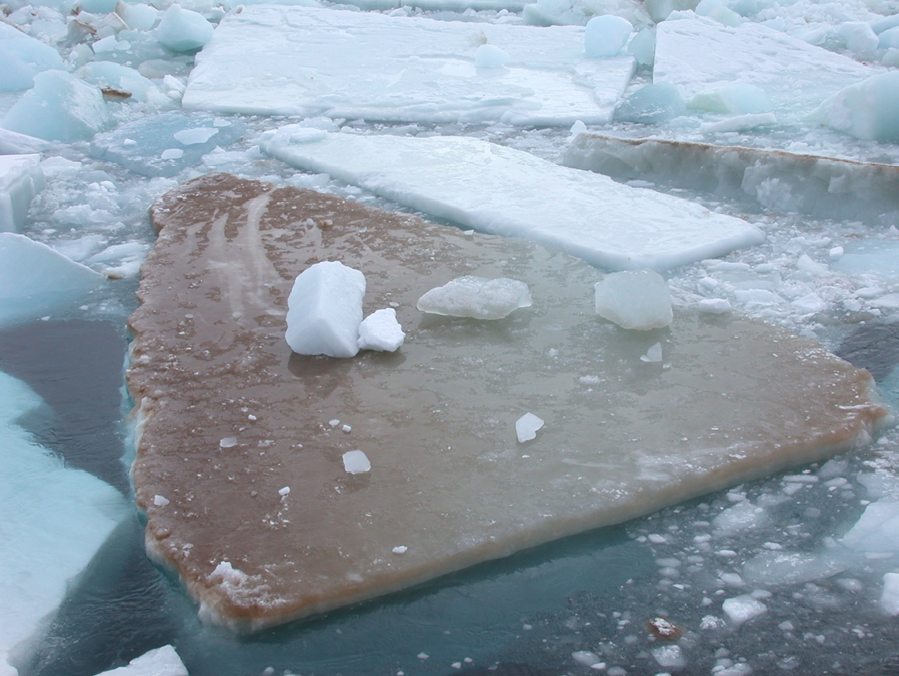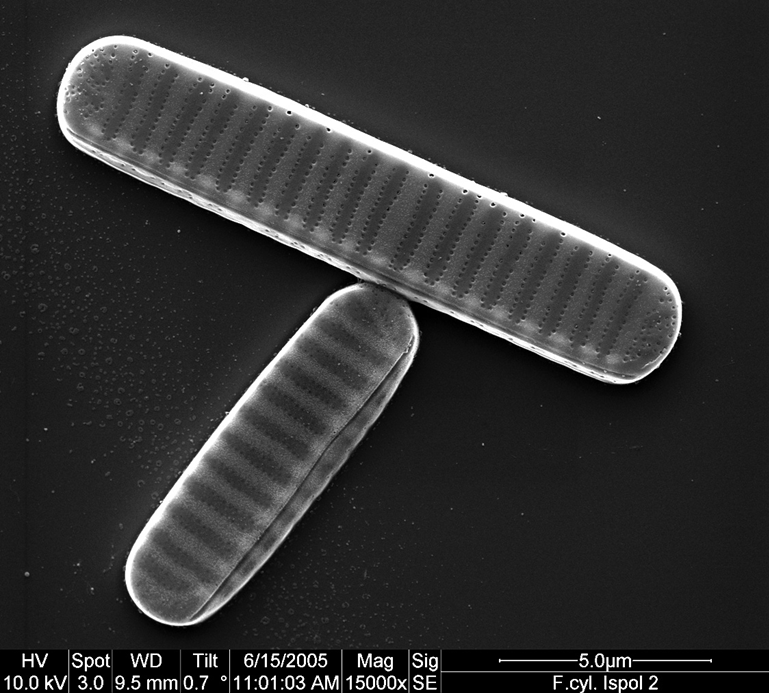- Researchers have long wondered how microalgae manage to survive in polar seas, where conditions are extreme and change rapidly.
- New research looking at the DNA of a diatom finds that the species likely evolved with the ability to quickly change which genes are expressed making it ready for anything.
- This research hints that diatoms may be able to adapt to climate change – but that doesn’t mean other vital species, such as krill, have the capacity to do the same.
Picture the blue whale, the largest known animal ever to have lived. This endangered mammal can grow up to 30 metres (about 98 feet) and weigh 173 tonnes; it has veins and arteries wide enough for an adult human to swim through.

What do such mammoth wonders feed on? Little, semi-transparent crustaceans called krill. Lots and lots of krill.
Measuring just six centimetres (around two and a half inches) and weighing about one gram fully grown, swarms of two million tonnes of krill spanning more than 450 square kilometres (166 square miles) have been spotted. But it is what krill eat – microscopic algae – that are the real stars in this story.
Most microscopic algae, or microalgae, have just one cell. They are producers, meaning they photosynthesize, making their own food. And as producers, their abundance underpins key food chains in polar regions – like that of the microalgae-krill-whale. Without microalgae there are no krill. Without krill, no blue whales – or penguins, seals, many birds and fish, and many other cetaceans.
Each season, the Southern Ocean experiences extreme variations in light, temperature, salinity, essential gases, and nutrients. But many forms of microalgae, like diatoms (a type of one-celled microalgae, usually enclosed by an intricate silica shell), manage to survive – and thrive – in these harsh environments.

From the harshest realms of earth, the building blocks of marine life
Recently, a team of forty-five scientists discovered how these microalgae survive in such threatening – and variable – polar environments. Their findings are timely, coming as the climate crisis mounts, which heralds the need for Earth’s inhabitants to adapt to increasingly extreme environments.
“There was a big knowledge gap [before this study],” said Dr. Thomas Mock, Professor of Marine Biology at the University of East Anglia School of Environmental Sciences and co-author of a paper published in Nature in January.

Mapping and analyzing the complete set of genes of the polar diatom Fragilariopsis cylindrus, the team found out that species such as this were highly adaptable because of the makeup of their genes.

Mock explained that F. cylindrus has “an allele – [a different form of the same gene] – for every occasion.”
Within F. cylindrus’s set of genes, about one quarter consists of loci (positions on the set of genes) with alleles that are highly divergent. So, when F. cylindrus finds itself in different extreme environmental conditions, for instance a very hot compared to a very cold environment, it trawls through its varied library of alleles and expresses the ones most suitable for its survival at that point in time.
For instance, when the scientists placed F. cylindrus in darkness for seven days, they found that several genes (such as those involved in photosynthesis) hardly expressed themselves. But when the diatom was placed under continuous light, those genes expressed themselves with much greater frequency.
And the reason why F. cylindrus has such divergent alleles might be none other than the harsh environments it lives in – “[We] think that changing environmental conditions (e.g. freezing and melting of sea water) drive diversifying selection of alleles because this gives the populations a fitness advantage,” Mock wrote in an email.
This occurrence is by no means restricted to Fragilariopsis cylindrus.
“We have preliminary evidence that this is widespread in the polar system as we saw this in other polar diatoms, too,” Mock wrote. “There is even [unpublished] evidence for this in tropical corals.”

The researchers couldn’t have studied the species’ DNA, however, without the latest technology.
“Sampling of F. cylindrus was not challenging. You can even order this species from a culture collection,” Mock told Mongabay. “The most challenging part was to identify and to analyze the diverged haplotypes [alleles that tend to be inherited together, forming a DNA signature]. The assembly of these regions was very difficult as no tools were available to do haplotype-resolved assembly when we started this project about 10 years ago.”
But newly-developed technology, like long-read PacBio sequencing software, enabled them to finally perform the analysis they needed.
Climate change: adapt or die
On average, the world’s sea ice environments span two and a half times the area of Canada. They are simultaneously birthplaces to seals and walruses, hunting and breeding grounds for polar bears, and foraging ground for arctic foxes, whales, and many more animals. Sea ice also plays a key role in regulating the Earth’s temperatures – their bright surfaces reflect sunlight back into space, which helps keep polar regions cool. But sea ice is rapidly melting.
According to NASA, September Arctic sea ice (when sea ice shrinks to its minimum) is declining at a rate of 13.3 percent per decade.
Mock told Mongabay that while diatoms seem able to adapt rapidly to climate change, there is no assuming that this would be the case for other polar species.
Krill, for instance, do not appear to be coping as readily. Antarctic krill populations have been declining rapidly, with krill populations shrinking 70 to 80 percent over the past 40 years in the area of the ocean where most krill are found. The reason is likely climate change. Without krill, so many of the world’s iconic marine animals could decline and even, potentially, go extinct.
“Either [polar species] adapt rapidly or they go extinct,” Mock said. “There will be a shift in diversity one way or the other.”
Citations:
- Mock, T., Otillar, R. P., Strauss, J., Mcmullan, M., Paajanen, P., Schmutz, J., . . . Grigoriev, I. V. (2017). Evolutionary genomics of the cold-adapted diatom Fragilariopsis cylindrus. Nature, 541(7638), 536-540. doi:10.1038/nature20803
- National Snow and Ice Data Center. (n.d.). Retrieved April 14, 2017, from https://nsidc.org/cryosphere/seaice/environment/mammals.html
- Shaftel , H. (n.d.). Climate Change: Vital Signs of the Planet: Arctic Sea Ice Minimum. Retrieved from https://climate.nasa.gov/vital-signs/arctic-sea-ice/
- Thomson, Andrea (2016, August 29). Krill Are Disappearing from Antarctic Waters. Scientific American. Retrieved from https://www.scientificamerican.com/article/krill-are-disappearing-from-antarctic-waters/